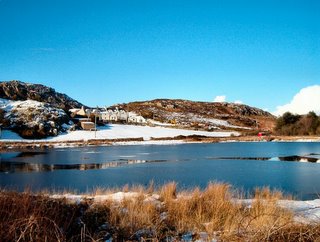Copper Mining in Anglesey

Archaeologists tell us that copper has been mined in Anglesey for 3,500 years. A similar story emanates from the Great Orme, the headland at Llandudno. In Anglesey there were two mines. The Parys Mine was owned by a family in nearby Dulas (pronounced Dillas) and the Mona Mine was in the ownership of the Marquess of Anglesey. Back in the earlier part of the 19th century the mines were beginning to fare badly. It was probably down to poor organisation.
The Marquess of Anglesey decided to do something about the Mona Mine and recruited a Cornishman, James Treweek, as his mine manager. Treweek had experience of copper mining in his native Cornwall and recruited quite a number of Cornish families to come and live in Anglesey to work in the mine. As far as the mine was concerned, James Treweek was successful in vastly improving productivity, and eventually became the supremo of both mines and the ancilliary trades too.
Cornwall was and remains an area where Methodism rules OK. Treweek was a Methodist and a local preacher. When he came to Anglesey he worshipped at the Wesleyan Chapel in Wesley Street, Amlwch where was the port through which the copper passed. The whole island was Welsh speaking, so Treweek learned to speak the language and began preaching at the Welsh Services. He realised that his workers needed to worship in English and so he arranged to lead English services at the Wesleyan Chapel.
Later he realised that the ideal situation was to have an English Methodist Church. He organised fund raising and in 1830 the English Methodist Church opened, further up Wesley Street. Pew rents were the main way to raise the cash needed. A few years later the chapel was extended to become the church building we see today.
It was and is a small building with a maximum capacity of about 120 people. It stands with its side to the street, unlike most free churches whose front faces the street. This makes it quite easy to walk past it without realising it is there. It is built in the Cornish style with a centre aisle and is very condusive to worship.
A considerable amount of time has passed since copper was last mined on Parys Mountain where the two mine stand. The land surrounding the old mines is multi coloured with reds, oranges, yellows and greys to be seen everywhere. The great opencast is a huge hole dug out over a long period of time using very dangerous practices and causing many deaths at work there. It was a hard life for the families employed there, but probably no harder than the life of a slate quarryman on the mainland. I refer to families because wives and children all came to work at the mine. The children used to carry large lumps of ore to the women who broke it up into smaller, useable pieces for onward shipment.
Visitors to the island can take a look at what remains of the old mine workings. There is a heritage trail which takes you all round the various parts of the site and there is a great vantage point for photographing the Great Opencast. At the start of the trail you can buy, using an honesty box, a copy of the Copper Trail map in Welsh or English. On top of all this interest you get fit doing the walk! My wife and I have done the trail and enjoyed it. But take heed, if you have any disability, because the trail is level for most of the walk but changes to a steep hill towards the end.
Down at the port there is an old sail loft which is now a Heritage Centre, dedicated to copper mining and other aspects of Amlwch. It is most informative and you can get an excellent cup of tea or coffee with a sticky bun or a biscuit in the cafe there. The port was an important part of the petro chemical industry not long ago when super tankers used to moor off the coast and discharge part of their cargo before offloading the rest on Merseyside on the mainland. At the seaward end of the port you will see the modern docks used by the service vessels of the oil industry. Right next to them is what remains of an old dry dock when ships were built and maintained at Amlwch port.



